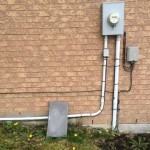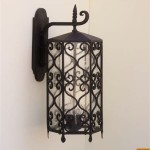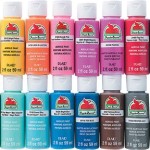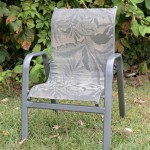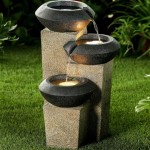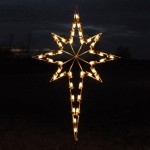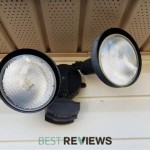LED Light Bulbs for Outdoor Flood Lights: A Comprehensive Guide
Outdoor flood lights are essential for security, safety, and aesthetics in residential, commercial, and industrial settings. They illuminate large areas, deter crime, highlight architectural features, and enhance visibility in pathways, driveways, and parking lots. The choice of light bulb used in these fixtures greatly affects their performance, energy efficiency, and lifespan. Light-Emitting Diode (LED) bulbs have emerged as the superior choice for outdoor floodlights due to their numerous advantages over traditional lighting technologies like incandescent, halogen, and metal halide.
This article provides a comprehensive guide to using LED light bulbs in outdoor floodlights, covering their benefits, types, selection criteria, installation considerations, and maintenance tips. Understanding these aspects will enable users to make informed decisions and maximize the functionality and longevity of their outdoor lighting systems.
Key Point 1: Advantages of LED Light Bulbs for Outdoor Flood Lights
LED light bulbs offer a multitude of advantages that make them ideal for outdoor flood light applications. These benefits span energy efficiency, longevity, durability, and performance characteristics.
Energy Efficiency: LED bulbs are significantly more energy-efficient than traditional lighting technologies. They convert a much higher percentage of electrical energy into light, with minimal energy wasted as heat. For example, an LED bulb can produce the same amount of light as a halogen bulb while consuming up to 80% less power. This reduced energy consumption translates directly into lower electricity bills and a reduced carbon footprint. Over the lifespan of a floodlight, the energy savings from using an LED bulb can be substantial.
Longevity: LED bulbs have a significantly longer lifespan compared to other types of light bulbs. A typical LED bulb can last for 25,000 to 50,000 hours or more, whereas incandescent bulbs typically last for around 1,000 hours, halogen bulbs for 2,000 to 4,000 hours, and metal halide bulbs for 10,000 to 20,000 hours. This extended lifespan reduces the frequency of bulb replacements, minimizing maintenance costs and associated labor. In hard-to-reach locations, such as high-mounted floodlights, the long lifespan of LEDs is particularly advantageous.
Durability: LED bulbs are more durable and resistant to damage than traditional lighting technologies. They are solid-state lighting devices, lacking fragile filaments or glass enclosures that are susceptible to breakage. LED bulbs are also more resistant to vibrations and impacts, making them well-suited for outdoor applications where they may be exposed to harsh weather conditions or accidental bumps. This increased durability reduces the risk of premature failure and the need for frequent replacements.
Instant On/Off: Unlike some traditional lighting technologies that require a warm-up period to reach full brightness, LED bulbs provide instant illumination when switched on. This is particularly important for security lighting applications, where immediate visibility is crucial. The instant on/off capability also allows for the use of motion sensors and timers, further enhancing energy efficiency and security.
Directional Lighting: LEDs emit light in a specific direction, unlike incandescent and halogen bulbs that emit light in all directions. This directional lighting characteristic allows for more precise control over the illumination pattern, minimizing light pollution and optimizing light distribution where it is needed most. In outdoor floodlight applications, this directional control can be used to highlight specific areas or features, such as pathways, landscaping, or building facades.
Color Rendering Index (CRI): LED bulbs offer a wide range of color temperatures and color rendering indices (CRI). CRI measures the accuracy with which a light source renders the colors of objects compared to natural sunlight. A higher CRI indicates better color rendering. LED bulbs are available with high CRI values, allowing for more accurate and vibrant color representation in outdoor environments. This is particularly important for commercial applications where color accuracy is critical, such as in retail displays or outdoor signage.
Environmentally Friendly: LED bulbs are more environmentally friendly than traditional lighting technologies. They do not contain mercury or other hazardous substances, making them safer to dispose of. Their reduced energy consumption also contributes to a smaller carbon footprint and helps to conserve natural resources.
Key Point 2: Selecting the Right LED Light Bulb for Outdoor Floodlights
Choosing the appropriate LED light bulb for an outdoor floodlight involves considering several factors, including light output, color temperature, beam angle, wattage, voltage, and compatibility with the existing fixture.
Light Output (Lumens): Light output is measured in lumens, which indicate the total amount of light emitted by a bulb. When replacing traditional bulbs, it is important to match the lumen output to achieve the desired level of brightness. For example, replacing a 100-watt incandescent bulb will require an LED bulb with approximately 1600 lumens. The required lumen output will vary depending on the application and the area to be illuminated. Larger areas will require higher lumen outputs.
Color Temperature (Kelvin): Color temperature is measured in Kelvin (K) and describes the color appearance of the light emitted by a bulb. Lower Kelvin values (2700K to 3000K) produce a warm, yellowish light that is suitable for creating a cozy and inviting atmosphere. Higher Kelvin values (4000K to 5000K) produce a cool, white light that is ideal for security lighting and areas where visibility is critical. For outdoor floodlights, a color temperature between 4000K and 5000K is typically recommended for optimal visibility and security.
Beam Angle: Beam angle refers to the angle at which light is emitted from the bulb. A narrow beam angle will concentrate the light in a smaller area, creating a spotlight effect. A wide beam angle will distribute the light over a larger area, creating a floodlight effect. The appropriate beam angle will depend on the specific application. For example, a narrow beam angle may be suitable for highlighting a specific architectural feature, while a wide beam angle may be required for illuminating a large parking lot.
Wattage: Wattage indicates the amount of power consumed by the bulb. LED bulbs consume significantly less power than traditional bulbs, so it is important to consider the equivalent wattage when selecting an LED replacement. For example, an LED bulb with a wattage of 15 watts may produce the same amount of light as a 100-watt incandescent bulb. Choosing a lower wattage LED bulb will result in significant energy savings.
Voltage: Ensure that the voltage rating of the LED bulb matches the voltage of the electrical system. In most residential applications, the voltage is 120 volts. Using a bulb with an incorrect voltage rating can damage the bulb or the electrical system.
Base Type: LED light bulbs are available in a variety of base types, including screw-in bases, bayonet bases, and pin bases. Ensure that the base type of the LED bulb matches the base type of the existing floodlight fixture. Common base types for floodlights include E26 (standard screw-in), E17 (intermediate screw-in), and GU10 (twist-and-lock).
Weather Resistance: Outdoor floodlights are exposed to harsh weather conditions, so it is important to choose LED bulbs that are designed for outdoor use. Look for bulbs with an Ingress Protection (IP) rating of IP65 or higher, which indicates that they are protected against dust and water. Bulbs with a higher IP rating will offer better protection against the elements and will be more durable in outdoor environments.
Dimmability: If dimming capability is desired, ensure that the LED bulb is compatible with dimming switches. Not all LED bulbs are dimmable, and using a non-dimmable bulb with a dimmer switch can cause flickering or damage to the bulb. Look for LED bulbs that are specifically labeled as dimmable.
Key Point 3: Installation and Maintenance of LED Floodlights
Proper installation and regular maintenance are essential for ensuring the optimal performance and longevity of LED floodlights.
Installation: Before installing an LED bulb, ensure that the power to the floodlight fixture is turned off. Remove the old bulb and carefully screw in or insert the new LED bulb. Avoid over-tightening the bulb, as this can damage the fixture. Once the bulb is installed, turn the power back on and test the light. If the light does not turn on, check the bulb to ensure that it is properly seated in the socket and that the power switch is in the on position.
Wiring Considerations: If the floodlight fixture is being newly installed, it is important to ensure that the wiring is properly installed and grounded. Consult with a qualified electrician if you are not comfortable working with electrical wiring. Improper wiring can create a safety hazard and can damage the floodlight fixture.
Fixture Compatibility: Ensure that the LED bulb is compatible with the existing floodlight fixture. Some fixtures may have specific requirements for bulb type, wattage, or size. Using an incompatible bulb can damage the fixture or reduce its performance.
Cleaning: Regularly clean the floodlight fixture to remove dirt, dust, and debris. A clean fixture will allow for better light output and will help to prolong the life of the bulb. Use a soft cloth and a mild detergent to clean the fixture. Avoid using abrasive cleaners, as these can damage the finish.
Weather Protection: Ensure that the floodlight fixture is properly sealed to protect against water and dust intrusion. Check the seals and gaskets regularly and replace them if they are damaged or worn. This will help to prevent corrosion and other damage to the fixture.
Regular Inspections: Periodically inspect the floodlight fixture and the LED bulb for any signs of damage, such as cracks, leaks, or discoloration. Replace any damaged components promptly. Regular inspections will help to identify potential problems early and prevent more serious damage.
Motion Sensor and Timer Adjustments: If the floodlight is equipped with a motion sensor or timer, periodically check the settings to ensure that they are functioning properly. Adjust the settings as needed to optimize performance and energy efficiency. This can prevent the light from turning on unnecessarily, saving energy and extending the life of the bulb.
By following these installation and maintenance tips, users can ensure that their LED floodlights provide reliable and efficient illumination for years to come.

Philips Led 90 Watt Par38 In Outdoor Flood Light Bulb Bright White Dimmable 40 Beam Spread E26 Medium Base 2 Pack Com

Ge Daylight 90w Replacement Led Outdoor Floodlight Par38 Light Bulb 2 Pack 93119045 Rona

Energetic Outdoor Par38 Led Flood Light Bulb Wet Rated 90 Watt Equivalent 11w 900 Lumens Daylight 5000k E26 Base Ul Listed 6 Pack Com

Feit Electric 150 Watt Equivalent Par38 Outdoor Dimmable Cec Title 20 90 Cri E26 Medium Flood Led Light Bulb Daylight 5000k 2 Pack Par38dm 1600 950ca The Home Depot

Feit Electric 75 Watt Equivalent Par38 Non Dimmable Cec Title 20 Outdoor 90 Cri E26 Flood Led Light Bulb Daylight 5000k 4 Pack 950ca10k Mp The Home Depot

Ge Led Linkable Motion Bulb Sensor Security Par38 Light Outdoor Floodlight 90w Warm White 3 Pack

Ecosmart 150 Watt Equivalent Par38 Dimmable Cec Flood Dusk To Dawn With Selectable Color Temperature Led Light Bulb 1 Pack G117p38d2d5duo The Home Depot

Promo Led Sorot 30w Flood Light Lampu Floodlight Tembak 30 W Watt Outdoor Fs Jakarta Pusat Agenled Tokopedia

Philips Led 45 Watt Par38 Indoor Outdoor Floodlight Light Bulb Bright White Dimmable E26 Medium Base 2 Pack Com

The 3 Best Smart Outdoor Lights For Backyards Of 2024 Reviews By Wirecutter
Related Posts
